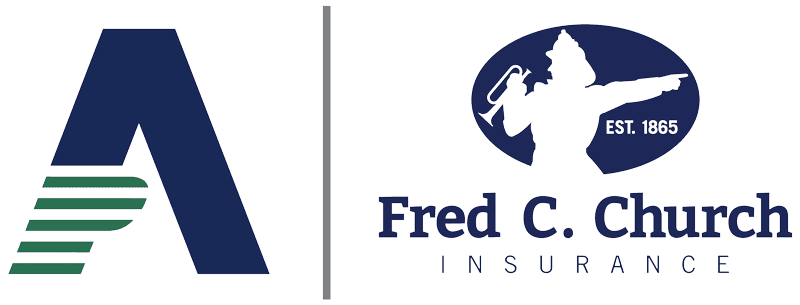August 2022 Employee Benefits Compliance Alert
Release Date: August 10, 2022
IRS Announces 2023 ACA Affordability/Employer Contribution Rate of 9.12%
a. 9.12%
Last week, the IRS announced in IRS Revenue Ruling 2022-34 that the 2023 ACA affordability rate used to assess whether ACA large employers have offered affordable health coverage to full-time employees will be 9.12%, the lowest ever, which is down from 9.61%. For 2023, health coverage offered by a large employer is deemed affordable if the employee’s contribution level for self-only coverage does not exceed 9.12% of the employee’s income as measured by one of three safe harbors: the Federal Poverty Level method, the Rate of Pay method, or the W-2 Method. The new 2023 rate will mean that employers will have to make a larger employer health insurance premium contribution, as compared to 2022, if the employee’s affordability benchmark is 9.12%.
A copy of IRS Revenue Ruling 2022-34 is here: Rev. Proc. 2022-34
b. How Do You Know if You Are a Large Employer?
Employers will need to comply with the ACA employer mandate and the affordable offer of coverage requirement only if they are deemed a large employer based on 2022 calendar-year employee headcounts. The magic number in regard to triggering compliance is a combination of full-time employees and/or part-time employees equal to 50.
IRS Example: (i) Facts. During each calendar month of 2022, Employer W has 20 full-time employees, each of whom averages 35 hours of service per week; 40 employees, each of whom averages 90 hours of service per calendar month; and no seasonal workers.
(ii) Conclusion. Each of the 20 employees who average 35 hours of service per week counts as one full-time employee (FTE) for each calendar month. To determine the number of FTEs for each calendar month, the total hours of service of the employees who are not full-time employees (but not more than 120 hours of service per employee) are aggregated and divided by 120. The result is that the employer has 30 FTEs for each calendar month (40 × 90 = 3,600, and 3,600 ÷ 120 = 30). Because Employer W has 50 full-time employees (the sum of 20 full-time employees and 30 FTEs) during each calendar month in 2022, Employer W is an applicable large employer for 2021.
Transparency in Coverage Requirement: Machine-Readable Health Cost/Rates Data File Publication
During this past July, employers sponsoring health insurance should have heard directly from their health insurance carrier, or their third-party administrator (TPA) if their health insurance is self-funded, about a new disclosure requirement under the Transparency in Coverage requirements of the Consolidated Appropriations Act. Specifically, among other things, employers/sponsors of employee health plans, i.e., major medical, must make available to the public on their websites a link to machine-readable files (MRFs) that disclose: (1) in-network provider rates for covered items and services; (2) out-of-network allowed amounts and billed charges for covered items and services, and negotiated rates under their health plan; and (3) historical net prices for covered prescription drugs in three separate machine-readable files. The federal government has indicated that it will defer enforcement on item (3), the disclosure of prescription drug content requirement, until additional feedback is collected and analyzed. The federal government has announced that it would not consider any compliance enforcement activity on items (1) and (2) until July 1, 2022, at the earliest. What follows are FAQs designed to help you better understand the new transparency requirement.
Q: What public policy purpose is being advanced by asking employers/health plan sponsors to comply with this new MRF posting requirement?
Health care price transparency information for employees and consumers.
Q: Is there a minimum employer/employee headcount that triggers compliance with this new requirement?
There is no minimum employer size requirement expressed in the regulations. Technically, ERISA requires at least two employees to have a plan.
Q: What is a machine-readable file (MRF)?
An MRF is a digital representation of data or information in a file that can be imported or read by a computer system for further processing without human intervention while ensuring no semantic meaning is lost. Your health insurer or TPA will prepare an update of the MRFs on a monthly basis. They will be accessible for consumers by their use of an internet link to be provided to you.
Q: What does a fully insured employer/plan sponsor have to do?
At this time, we recommend posting an internet link on the employer/plan sponsor’s website that will connect employees to the health insurance carrier’s website, where they will be directed to the MRFs. The health insurance company will provide the internet link and update the link as needed.
Q: What does a self-funded client need to do?
We recommend posting a link on the employer/plan sponsor’s website that will connect employees to the health insurance carrier’s website, where they will be directed to the MRFs. The TPA provider for the self-funded plan should provide the link.
Q: Who produces the MRF for the employer/plan sponsor?
Health insurers should be providing a link to the MRF to their fully insured clients. For self-funded clients, their TPA should be able to provide the MRF link. The employer/plan sponsor should confirm that the MRF links will either be posted by the health insurer or by the TPA assisting with a self-funded health plan.
Q: How often does the content for items (1) and (2) described previously have to be updated, and who does the updating?
The MRFs need to be updated monthly. The insurance company or the TPA should update the MRFs.
Q: Can the employer/plan sponsor satisfy the MRF posting requirement by either the health insurer for a fully insured plan or the TPA for a self-funded plan posting the MRFs on its website?
Yes. The regulations allow for a Non-Duplication Rule, which provides that if there is a written agreement between the employer/plan sponsor and either the health insurer or the TPA to post the MRFs, legal responsibility for posting the MRFs shifts to the health insurer or TPA. At this point in time, we have not seen any Non-Duplication Rule written agreements. We expect they will become part of a routine renewal process with the health insurer.
Q: Where on the employer/plan sponsor’s website should the link to the MRFs be posted, and is there any language you recommend to accompany the internet link?
Employers/plan sponsors enjoy discretion as to where to locate the link to the MRFs on their website, given their knowledge of their website traffic and the places on their website where the machine-readable files would be readily accessible. Generally, there appears to be a growing consensus that clients will locate the link on an HR/benefits page or a careers page.
We would recommend the following language accompany the link to the MRFs:
This link leads to the machine-readable files (MRFs) that are made available in response to the federal Transparency in Coverage Rule. The MRFs include negotiated service rates and out-of-network allowed amounts between health plans and health care providers.
Q: What should I do if I did not receive an MRF link from my health insurance carrier or the TPA who manages my self-funded health plan?
Contact your Fred C. Church account manager, George Thompson, Senior Counsel and VP of Compliance, at gthompson@fredcchurch.com.
Additional Resources:
Release Date: August 22, 2022
Massachusetts Paid Family Medical Leave Developments: Interaction between Paid Leave and Other Types of Leave Received by Employees
Introduction
The Massachusetts Department of Family and Medical Leave (DFML) recently published guidance regarding the interplay between Paid Family and Medical Leave (PFML) and other types of leaves or leave benefits (e.g., workers’ compensation, vacation/PTO, STD/LTD, unemployment, etc.). The guidance that follows is intended to educate employers as to how the state PFML program would manage the intersection of these varied leave benefit issues. If your Massachusetts PFML risk is insured through a carrier, the carrier may be more generous toward the employee than is required by the state program.
Finally, DFML also made available for public comment a draft revision of a PFML regulation focused on an employer’s responsibility to “maintain” health insurance for an employee on PFML.
1. Updated Guidance
When applying for PFML, an employee needs to report any other instances of paid and unpaid leave (for any qualifying reason) they have taken in the 12 months before the start of their current leave. Other types of leave include federal programs like the Family and Medical Leave Act (FMLA) and independent leave offered by an employer. Benefits from these leave programs may reduce the employee’s paid leave benefit amount and/or the total amount of leave the employee is eligible to take.1
I. Amount of leave an employee is eligible to take
Most Massachusetts employees are eligible for up to 26 weeks of combined family and medical leave per benefit year. These 26 weeks may include:
- Up to 20 weeks of paid medical leave to manage a personal serious health condition
- Up to 12 weeks of paid family leave to care for a family member or to bond with a child
- Up to 26 weeks of paid family leave to care for a family member who is a member of the armed forces
An employee can take more than one kind of Family and Medical Leave in a benefit year, but the maximum amount of leave they can take in a benefit year is 26 weeks.
Example:
Martha had to get knee surgery, so she took 20 weeks of medical leave in January. She is due to have a baby in November. Because this falls within the same benefit year, she has 6 weeks of family leave left in her benefit year to bond with her baby.
II. Reductions to benefit payments approved by DFML: The Process
When an employee submits their application, any reductions to their weekly benefit amount will be automatically calculated based on the information DFML receives from them and their employer during the review process.
In addition, reductions can still occur after an employee’s leave is approved if the employee didn’t accurately report other leave or benefits or they are receiving payments/time off from other programs at the same time as PFML.
a. Unemployment insuranceUnemployment benefits received during leave will reduce an employee’s paid leave benefit amount. Unemployment benefits an employee receives before their leave started won’t affect their paid leave benefits.
b. Workers’ compensation
Workers’ compensation benefits will reduce the paid leave benefit amount. However, if an employee has a permanent partial disability that happened prior to their PFML application, the employee may be able to receive both workers’ compensation and paid leave benefits at the same time.
c. Social Security programs
An employee may be eligible to take paid leave if they get Supplemental Security Income (SSI) or Social Security Disability Income (SSDI). They must report this income when they apply for paid leave, and it may reduce their PFML benefit amount.
d. Temporary disability or paid family and medical leave benefits through the employer
An employee can receive payments from STD, LTD, or self-funded paid leave policies through their employer at the same time they receive PFML benefits. The employee’s PFML benefits will only be reduced if the total they receive from both payments is greater than their average weekly wage.
e. Paid time off through the employer
Most employers offer paid time off (PTO). This includes vacation days, sick days, and personal time. An employee cannot use paid time off on the same days they receive PFML benefits. The following examples illuminate this point:
III. At the beginning of paid leave from PFML
When an employee’s PFML leave begins, there is a 7-day waiting period before PFML payments start. The employee will be on job-protected leave, but they will not receive benefit payments. The employee can use employer paid time off during this waiting period and it won’t affect their PFML benefits. This can be helpful if they want to avoid an unpaid week.
Example:
Jim is taking 10 weeks of medical leave to recover from surgery. Under PFML, the first week is unpaid so he is eligible to receive 9 weeks of PFML payments. If Jim chooses to use his paid time off at the beginning of his leave, he may receive his full salary during the 7-day waiting period and it won’t affect the total PFML payments he receives. Jim should not report to DFML that he is taking PTO during the 7-day waiting period.
IV. In the middle of paid leave from PFML: Using PTO during a continuous leave schedule
If an employee is taking continuous PFML, they can only use paid time off in a single block of time, either at the start or end of their leave. If they have already started receiving PFML benefits, taking paid time off in the middle of their PFML may reduce their PFML payments to $0 for the remainder of their leave. If this happens, the employee may need to reapply to receive PFML payments again if they still have a qualified reason for leave.
V. In the middle of paid leave from PFML: Using PTO during an intermittent or reduced leave schedule
If an employee is taking reduced or intermittent leave, there will be days or times they are scheduled to work. If the employee needs to take time off for an unrelated family or medical leave reason on those days, the employee can use employer paid time off.
Example:
If an employee is taking a vacation or going to court, this will not stop their PFML benefits. If they take time off unrelated to their PFML leave, they don’t need to report the time to DFML.
VI. At the end of paid leave from PFML
An employee can use paid time off at the end of their PFML leave. PFML benefits will stop, but the employee will remain on job-protected leave until the end of their approved leave.
Example:
Mark is taking 7 weeks of leave to care for his domestic partner while he is recovering from a broken ankle. To extend his leave to 8 weeks, he chooses to use 1 week of sick time at the end of his leave. His PFML benefits will have stopped, and this will not affect his payments.
2. Proposed Regulatory Change: Revising of the Employer’s Requirement to “Maintain” Employee Health Insurance
The following proposed changes significantly expand the concept of what it means for an employer to “maintain health coverage” for an employee using PFML, as well as emphasizing that not all employees, or former employees, who receive PFML benefits have an automatic right to health coverage during their leave. We have emphasized some of the language that appears in bold. DFML is inviting comments about the proposed change and intends to have public hearings in the coming weeks on the topic as well.
Proposed Regulatory Change
… Maintenance of Health Insurance. During the duration of an employee’s family or medical leave, the employer shall continue to provide for, and contribute to, or otherwise maintain the employee’s employment-related health insurance benefits, if any, at the level and under the conditions that coverage would have been provided if the employee had continued working continuously for the duration of such leave. The provision “otherwise maintain” shall be interpreted broadly to encompass any method of benefit maintenance or approximation of benefits that permits an employee taking family or medical leave to maintain access to health coverage for the duration of the leave on the same or equivalent terms, including the employee’s costs for such coverage, such as premium contributions, co-pays, and deductibles. Employers may “otherwise maintain” coverage in a variety of ways to comply with this provision, including but not limited to the following examples:
(a) The employer continues to pay its portion of the group-insurance-plan health insurance premium for that employee for the duration of the family or medical leave from the employer, and the employee portion of the employee’s employment related health insurance benefits shall be remitted by the employee in accordance with the employer’s uniformly-applied policies or practices. …
(b) The employer both (i) provides coverage under the federal COBRA law (29 U.S.C. sec. 1161 et seq.) or the Massachusetts Mini-COBRA law (M.G.L. c. 176J, Sec. 9) until the employee can resume regular employer-sponsored coverage, and (ii) reimburses the employee for both the monetary equivalent of the portion of the health insurance premium that was previously paid by the employer and any additional amount required to be paid under the COBRA or mini-COBRA laws that is in excess of the portion of the health insurance premium that was previously paid by the employee, so that the amount the employee pays toward health insurance remains unchanged. This example would be applicable only if an employee is eligible for such coverage.
(c) An employer who participates in a plan, such as a multi-employer health plan to which more than one employer is required to contribute and which is maintained pursuant to one or more collective bargaining agreements between employee organization(s) and the employers, that establishes eligibility for coverage for a period of time based on hours worked or contributions made during an earlier qualifying period, allows employees who have established eligibility for coverage prior to beginning a family or medical leave to continue coverage while they are taking leave and while they remain eligible for coverage based on the earlier qualifying period, or allows them to use banked hours.
(d) An employer participates in a multi-employer plan that contains a provision for maintaining coverage such as through pooled contributions by all employer’s party to the plan.
Employers shall not be required to provide for, contribute to, or otherwise maintain employment-related health insurance benefits to an employee who does not receive or is not eligible to receive such employment-related health insurance benefits when the employee’s family or medical leave begins. Nor are employers required to provide for, contribute to, or otherwise maintain health insurance benefits to covered individuals who resign during a leave or are former employees when the covered individual’s family or medical leave commences.
Feel free to contact Fred C. Church Insurance, Senior Counsel/Vice President of Compliance, George Thompson, with any questions about this alert or about employee benefit compliance: gthompson@fredcchurch.com.
1 Copied from the DFML website at https://www.mass.gov/info-details/how-other-leave-and-benefits-can-affect-your-paid-family-and-medical-leave#paid-time-off-through-your-employer.
Note: This alert constitutes compliance advice from the Fred C. Church Agency as your employee benefits broker and does not establish an attorney-client relationship with the recipient, who is free to consult with legal or tax counsel of their own choosing.



